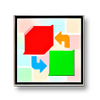Morph or warp images to create a different look for backgrounds and websites
Morph or warp images to create a different look for backgrounds and websites
Vote: (13 votes)
Program license: Free
Developer: Debugmode
Version: 3.01
Works under: Windows
Vote:
Program license
(13 votes)
Free
Developer
Version
Debugmode
3.01
Works under:
Windows
Pros
- Shape-based morphing system for precise control
- Supports a variety of export formats including AVI, MPEG, and SWF
- Includes tutorials to assist new users
- Optimized for smooth performance on Windows systems
- Free to use, making it accessible for hobbyists and professionals alike
Cons
- Interface is not as user-friendly as could be expected
- Lacks a traditional dot-based alignment system, which may confuse new users
Seamless Photo Morphing with Professional Results
WinMorph is a specialized software tool designed for graphic enthusiasts and professionals who want to delve into the world of photo morphing and warping. Morphing, the process of smoothly animating a transformation from one image to another, has become a staple in various media productions. WinMorph stands out by offering users the power to create stunning visual effects without requiring extensive resources.
Features and Functionality
Unlike many of its peers, WinMorph adopts a shape-based system for morphing rather than the traditional dot-based approach. This may initially come off as less intuitive to new users, but it also allows for more control and precision in creating morphs. The warping effects are ideal for subtle changes, such as altering facial expressions or reshaping objects in a static image.
WinMorph's versatility shines through in its support for a wide range of export formats, catering to different project needs. Users can export their final creations to popular formats including AVI, MPEG, and SWF (Flash), making this tool suitable for various multimedia presentations and web applications.
For those encountering difficulties or just starting out, WinMorph includes a set of basic tutorials to help navigate through the features and functions of the software. These resources are valuable in accelerating the learning curve and getting users up to speed in crafting their own morphing and warping effects.
Interface and Usability
While WinMorph offers robust capabilities, it falls short on usability, particularly with its user interface which might not be as polished or user-friendly as some might expect from a modern application. The absence of a more familiar dot-based alignment system could also be seen as a hindrance to new users who are accustomed to that method in other graphic tools.
Nevertheless, with a bit of patience and time invested in learning the system, users can unlock the full potential of WinMorph to create professional-grade animations. The software may require a more hands-on approach, but the outcomes can be incredibly rewarding for those who persevere.
Performance
Performance-wise, WinMorph is optimized to function smoothly on Windows systems, ensuring a seamless experience while practicing the art of morphing and warping. The software's lean build means it's also friendly for older systems or setups with limited resources.
Conclusion
In conclusion, WinMorph presents as a niche graphical tool for those keen on exploring the realms of image morphing and warping. Its powerful feature set, coupled with the ability to export to multiple formats, makes it a potent asset in multimedia production. However, the software's less-than-intuitive interface suggests a learning investment that might deter casual users but promises a rich set of capabilities for dedicated and willing creators.
Pros
- Shape-based morphing system for precise control
- Supports a variety of export formats including AVI, MPEG, and SWF
- Includes tutorials to assist new users
- Optimized for smooth performance on Windows systems
- Free to use, making it accessible for hobbyists and professionals alike
Cons
- Interface is not as user-friendly as could be expected
- Lacks a traditional dot-based alignment system, which may confuse new users




